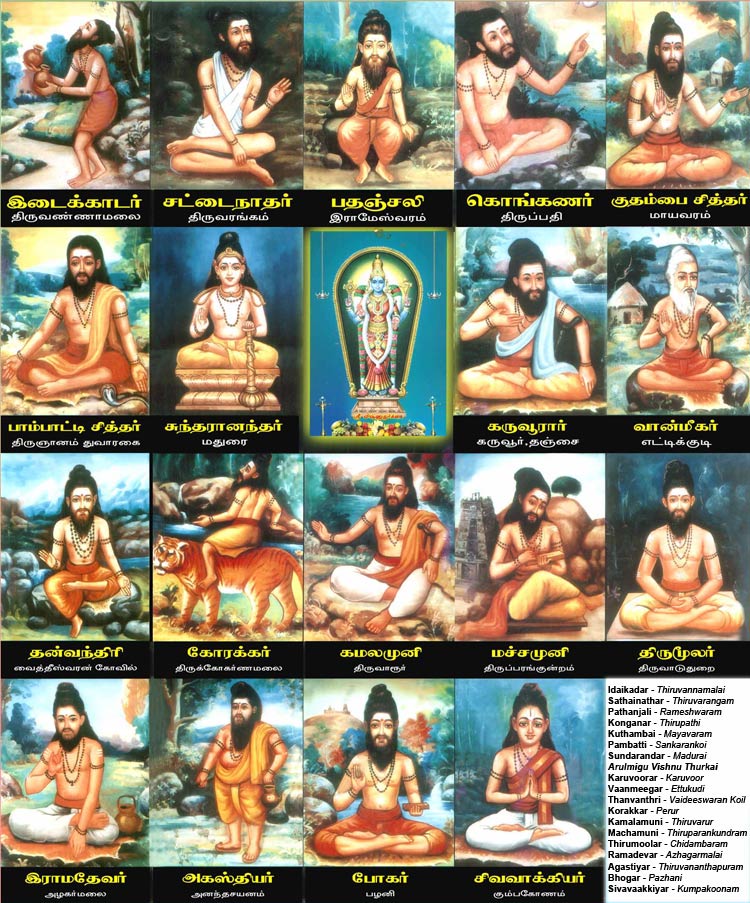Rainbow Body
འཇམ་དབུས་ནགས་འགྲོ་ཆེན་མོ་
What is a Rainbow Body?
A fully enlightened person (a Jivan Mukti) who also liberates the body into light.
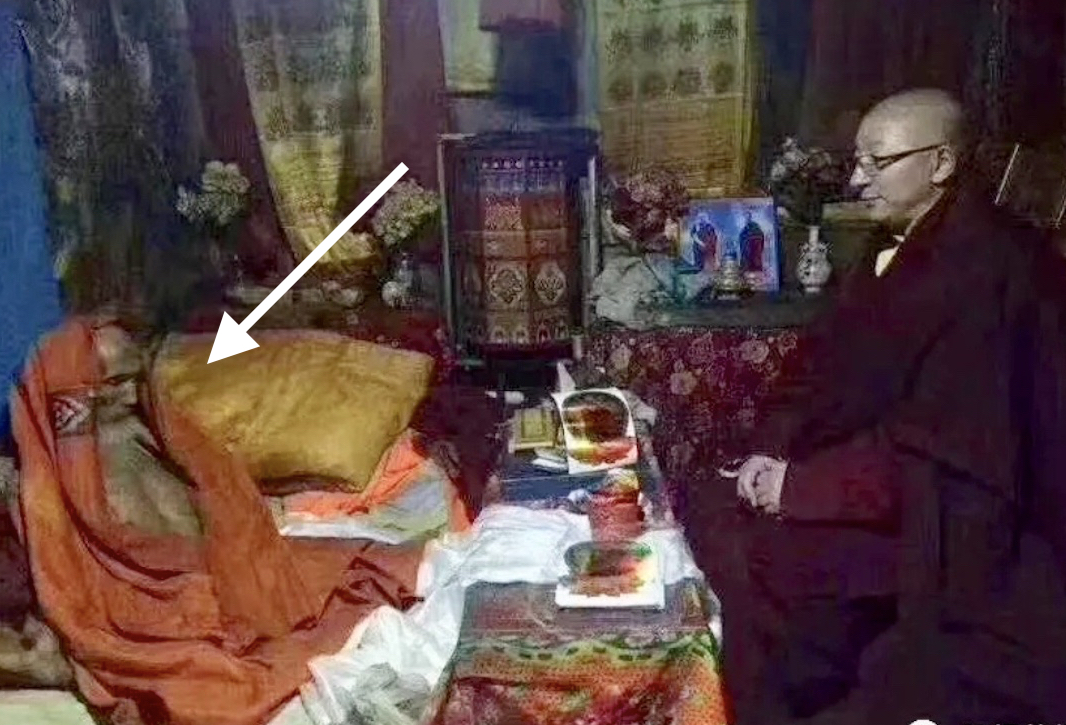

Illustration of the pre-death process of Lama Dribdel.
Now there are three levels of the Rainbow Body
A) Rainbow Body
The most common level is the "normal" Rainbow Body that occurs only after physical death. Every five years or so, a Buddhist from Tibet enters this state. There are no physical signs indicating the start of the process before death, except for the deep and absolute emptiness of ego in such a person. Once physical death occurs, it takes an average of seven days for the body to shrink and dissolve into light. Most of the time, a child-like size body remains behind, and in more advanced yogis, only hair and nails. The process of dissolving into light is visible as an orange glow around the saint, as seen in the image below from Lama Achuk Rinpoche.
B) Rainbow Body of Light
This level is even rarer and involves further dissolution of the physical body into light while the individual is still alive.
C) Rainbow Body of Great Transference
This represents the ultimate level of enlightenment (Moksha), where the individual attains complete spiritual liberation and can transfer their essence to other realms.
A) The most common level is the "normal" Rainbow body that occurs only after body death. Every 5 years or so a Buddhist from Tibet enters into this state. There are no physical signs indicating the start of the process before death (except if you are able to detect it, the deep and absolute emptiness of ego in such a person) and once physical death occurs it takes an average 7 days for the body to shrink and dissolve into light and most of the time a small child like size body remains behind and in more advanced yogi's only hair and nails. The process of dissolving into light is actually visible around the saint (normally a orange glow) in this process as can be seen in the image below from Lama Achuk Rinpoche:

Lama Achuk Rinpoche in the Rainbow Body state.

Chokgyur Lingpa in the Rainbow Body state.

Healing handprint left by Chogling during the Rainbow Body process. (Only a small body of around 5 cm remained - image on the left).
B) The more advanced level is also called the Rainbow Body, but for clarity, we’ll call it the Rainbow Body of Light. In this level, all signs appear while the yogi is still alive. The process of dissolving into light might occur rapidly, but in most cases, it takes months to years to complete, all while the yogi remains fully functional. Some yogis may slow down or fail to complete the process, dying before achieving the full Rainbow Body. This was the case with most famous Siddhars. If the process is completed, the body shrinks, emits visible light, and eventually disappears in a flash of rainbow light into emptiness forever.
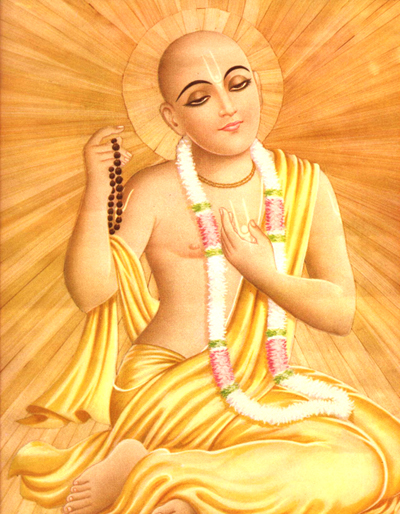
Chaitanya Mahaprabhu (did not complete the process but was well on his way).
C) The most advanced and extremely rare level is the attainment of Enlightenment or the Rainbow Body of Great Transference (Jalus Powa Chenpo). In this level, the yogi not only dissolves the body completely into light but also remains functional and visible as light.
In translations of the Rig Veda and several Upanishads from Sanskrit into European languages, Max Müller (1823–1900) coined the English word "enlightenment" to render Sanskrit terms such as mokṣa (मोक्ष) and bodhi (बोधि). Moksha is most basically defined as freedom from rebirths. The word "enlightenment" in the context of the Rainbow Body signifies liberation from rebirth by dissolving into light. This concept goes deeper than nirvana, which also denotes liberation from rebirth but does not address the fate of the physical body.

Padmasambhava's Rainbow Body (Guru Rinpoche).
For clarification, these three states have nothing to do with Spontaneous Human Combustion (SHC). Some have mistakenly believed saints such as Sambandar, Appar, and Sundarar attained the Rainbow Body state when, in fact, it was a case of SHC.
So let’s delve a little deeper into the history and background of the phenomenon known as the Rainbow Body.
21 Grams
Dr. Duncan "Om" MacDougall (c. 1866 – October 15, 1920) was an early 20th-century physician in Haverhill, Massachusetts, who sought to measure the mass lost by a human when the soul departed the body at death. MacDougall attempted to measure the mass change of six patients at the moment of death. His first subject, whose results he felt were the most accurate, lost "three-fourths of an ounce," which has since been popularized as "21 grams." The Rainbow Body phenomenon far exceeds this value.
Is the body really dead?
Peter Noble from the University of Washington conducted fascinating research in 2016 in the field of post-mortem activity. He discovered that certain genes—specifically 500 of them—are more active after death than before, peaking four days after physical death. This suggests that the brain and body retain some functionality even after we consider them to be dead. Notably, certain embryonic genes responsible for brain and eye development become reactivated post-mortem. Stem cells, the last to die, can remain alive for up to 17 days. This research is particularly intriguing when exploring the Rainbow Body phenomenon.
The ultimate great accomplishment in meditation is the attainment of the Rainbow Body. This is widely recognized as a sign of extreme sanctity in Tibetan Buddhism and among the Bönpo. Reports of this level of transmutation are rare but have been chronicled far into antiquity. The Rainbow Body, however, is not limited to Buddhism, as seen in the pictures below. To understand the process, we will examine the well-documented and delineated practice of Dzogchen in Tibet and reflect on the stories of Vallalar from South India, who went through the same process.
In the Himalayan regions, the early indigenous religion was that of the Bön. Bön predated the creation of both the sovereign territories later to become Tibet and the advent of Buddhism. When the great Indian tantric sage Padmasambhava (refer to the drawing above) brought Buddhism from India to Tibet in the 8th century AD, he encountered the richly tilled ground of the Bönpo. The land and its people embraced the Buddha’s teachings, and Buddhist beliefs merged seamlessly with the rituals of the Bön.
When Padmasambhava left the physical form, he dissolved his body completely back to its natural elements, leaving nothing behind. At that moment, a new lineage of Buddhist teachings was created. This marked the beginning of the Nyingma tradition, the foundation of Tibetan Buddhism as we know it today. At the heart of the Nyingma tradition is the practice of Dzogchen, also known as Ati Yoga or the Great Perfection.
According to Tibetan Buddhism and Bön, Dzogchen is the natural, primordial state or condition of a human being. The practice of Dzogchen is a body of teachings and meditations aimed at realizing that condition. Dzogchen literature describes it as the highest and most definitive path to enlightenment.
From the perspective of Dzogchen, the ultimate nature of all sentient beings is pure, all-encompassing, primordial clarity or naturally occurring timeless clarity. This intrinsic clarity has no form of its own yet is capable of perceiving, experiencing, reflecting, or expressing all forms. It does so without being affected by those forms in any ultimate, permanent way.
Dzogchen masters often use analogies to describe this nature. One analogy is that it is like a mirror that reflects with complete openness yet remains unaffected by the reflections. Another is a crystal ball that takes on the color of the material on which it is placed without itself being changed. Recognizing this mirror-like clarity (which cannot be found by searching or identified directly) is referred to as rigpa by Dzogchenpas. The most direct way to realizing this state is through the practices of Trekchö, an advanced practice in Dzogchen.
Trekchö practice consists of common and superior forms. The common form involves pointing out appearances as mind, revealing the true nature of emptiness. What remains is pure presence, nondual spaciousness-presence, also called Dharmakaya. The superior form, exemplified by Ramesh Balsekar, essentially involves a "Control-Alt-Delete" of all mental doingness. Both forms are observed in satsangs, particularly the first form. (The "Sat" in satsang actually refers to Dharmakaya.)
As Drubwang Tsoknyi Rinpoche once explained:
"Trekchö is the thorough cut of cutting through, cutting the obscurations completely to pieces, like slashing through them with a knife. So the past thought has ceased, the future thought hasn't yet arisen, and the knife is cutting through this stream of present thought. But one doesn't keep hold of this knife either; one lets the knife go, so there is a gap. When you cut through again and again in this way, the string of thought falls to pieces. If you cut a rosary in a few places, at some point it doesn't work any longer."
(Picture of Tsoknyi Rinpoche the 3rd, my teacher)

Tögal is the final practice in Dzogchen Buddhism, enabling the master yogi or yogini to dissolve their physical body into the essence of the elements at the time of death. While mantras like those used in Transcendental Meditation (TM) aim to dissolve the source of thought, Tögal is superior as it uses visualizations to dissolve the whole mind and body. However, practicing or understanding Tögal is futile unless you can answer the following question: Who creates visualizations? Realizing there is no individual "doer" is just the beginning. Trekchö must first come to full fruition before progressing to this final step. Tögal is a full-time practice, from morning to midnight and even during sleep.
When Tögal reaches fruition, the master disappears into a body of light, becoming the wisdom body (Yeshe). This state is referred to as 'Ja'-lus or the Rainbow Body in Tibetan. It is also central to Indian Buddhist tantricism (Vajrayana) and Taoist teachings (the Golden Body). Another related term is Soruba Samadhi or Deham, as Vallalar described it. It signifies a golden body, a state of God-realization where Divinity descends and transforms the spiritual, intellectual, mental, vital, and physical bodies. While it is often described as physical immortality, the term "physical" becomes irrelevant as the physical dissolves entirely.
The highest state attainable is called Jalus Powa Chenpo or the Rainbow Body of Great Transference (Gnana Deham). Decades of research reveal that all individuals who attained this level stopped eating and drinking entirely in the final stages of their lives. They also ceased breathing, a state called Vegaak Kaal, Saagaak Kalai, or the Breath of Light (Gathi). Examples include Manikeshwari Matha, Trailinga Swami, and Poondi Mahan. While Victor Truviano is still alive, the others have passed away. This suggests that the phenomenon involves more than mere breatharianism.
Additionally, complete clearing of the three granthis (known as the three dantiens or bandhas in yoga) is necessary to achieve the Tögal level in Dzogchen Buddhism. How can you tell when this is fully accomplished?
A) Brahma Granthi
A. Brahma Granthi completely stress-free: Sexual energy and the universe are one and the same. No blockages remain in tantra practices. Sexual desire is absent because the triggering layers are fully dissolved. While physical functions like erection remain possible, they are no longer driven by interest or desire, much like eating is still possible even without hunger. In this state, sexual energy is fully open and integrated.
B) Vishnu Granthi
B. Vishnu Granthi completely stress-free: No breathing is needed, which also eliminates the need for food consumption.
C) Rudra Granthi
C. Rudra Granthi completely stress-free: No more thoughts or dreams. Absolute ego death.
Urgyen Rinpoche explaining what is possible in meditation and the state of the Rainbow Body.
Often, masters who attain the Rainbow Body will return one last time out of compassion for their disciples, offering posthumous teachings known as the "Last Testament." These teachings are sometimes delivered while the master is in a transfigured state, occasionally suspended in the sky.

Jesus Christ
A great book about the Rainbow Body was published in 2020: Enlightened Intention: The Good Spiritual Life and Rainbow Body.
A) The Rainbow Body
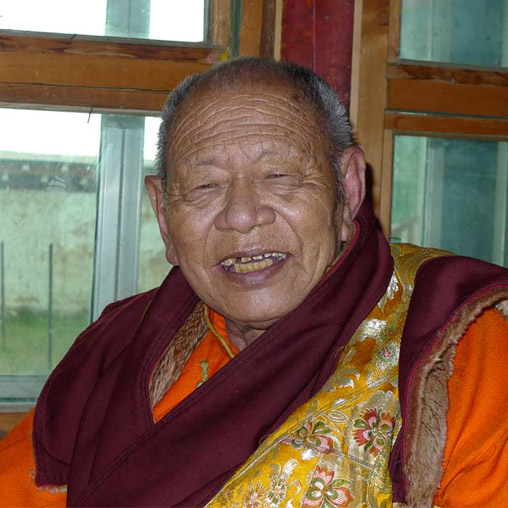
Lama Achuk Rinpoche
At the age of 84, Lama Achuk entered paranirvana and achieved the Rainbow Body, inspiring disciples to persevere in their practice of the Great Perfection teachings. On 29 August 2011, during the cremation ceremony of Lama Achuk, his body shrank from a height of 1.8 meters to about 3 cm, a sign of attaining the Rainbow Body.

Achuk Rinpoche
Who manifested the Rainbow Body. The lotus at the bottom of the photograph was not present when the photo was taken, in case you are wondering.

The Rainbow Body of Lama Achuk Rinpoche - 2011, size about 3 cm.

Chogye Trichen

Chogye Trichen rainbow body - 2007
The highest teaching

Nima Cultrim Rinpoche

Khenpo Acho - 1998

Lama Karma Rinpoche
November 2013

Lama Karma Rinpoche's Rainbow Body of 20 cm in size.

Tashi Lamo
She is the mother of Lokgar Rinpoche, one of the Tulkus in Nyingma Katok Monastery.

Tashi Lamo's Rainbow Body - 50 cm long.

Vallabha Acharya
(A Hindu) who attained the Rainbow Body in 1530 AD.

Shardza Tashi Gyaltsen
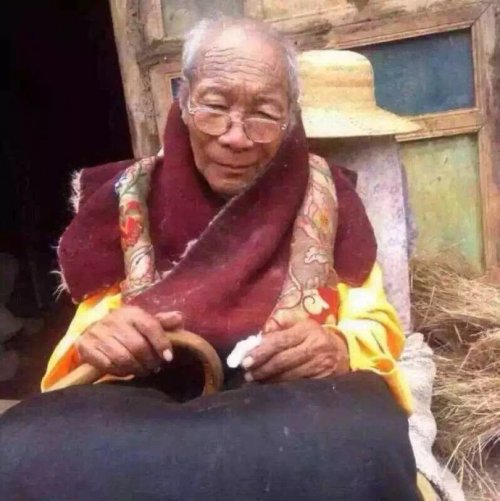
Lama Thubsher

60 cm Rainbow Body

Khandro Pema Dechen (2006)

Chak Zach Khenpo (June 2017)
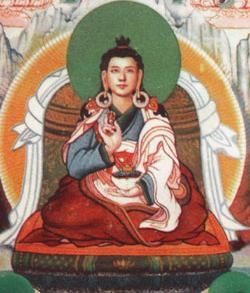
Nyala Pema Duddul (1872)

Ogyen Tendzin
B) Rainbow Body of Light
(Also referred to as Soruba Samadhi, or in more detail, Pranava Deham, Suddha Deham, and finally Gnana Deham)According to Vallalar's description, those who have reached the state of Pranava and Suddha Deham, the initial stages of the Rainbow Body while still alive, undergo significant physical transformations:
- Inner and outer skin become extraordinarily smooth.
- Nerves and muscles relax gradually.
- Bones, membranes, and cartilage become flexible.
- Blood and semen change from liquid to a thickened state.
- The brain and all its parts expand like a flower.
- The body begins to secrete Amrit (the "Nectar of the Goddess"), a divine fluid flowing from the crown chakra. This nectar tastes sweet like burned sugar, passes through the throat chakra, and grants immortality when it flows continuously.
- The face becomes brilliant, delicate, and harmonious, reflecting supreme happiness.
As this state deepens, profound abilities and transformations manifest:
- The senses transcend barriers: the eyes can see the entire universe, ears can hear any sound, and the skin can feel all tactile sensations.
- They can taste all flavors, smell all scents, and communicate with anyone across the universe.
- Movement transcends physical limitations; they can travel without walking and act without physical contact.
- They are free from the need for food, sexual impulses, and fear. Their bodies become flawless, free of defects and impurities, and they neither excrete nor perspire.
- Their appearance resembles a twelve-year-old, with no aging, gray hair, or wrinkles. They are beyond death's control.
- Hearts swell with divine love, and their bodies radiate ecstasy. The ego disappears entirely, replaced by divine grace and supreme love.
Those who achieve Pranava and Suddha Deham states are no longer bound by limitations. They can:
- Create and destroy at will.
- Resurrect the dead and restore youth to the aged.
- Manifest God's knowledge and actions, channeling divine grace through their presence.
- Transform even the most insignificant inanimate objects into conscious life.
- Surpass the six traditional spiritual disciplines (Vedanta, Siddhanta, Kalanta, Bodhanta, Nadanta - Tantra, and Yoganta) and achieve total bliss.
In one of his poems, Vallalar asserts that he experienced the Pranava Deham transformation and evolved even further. Through this transformation, the Supreme Grace manifested as total bliss. Vallalar explains how he achieved the ultimate transformation: the transmutation into Divinity, which he described as a fusion with the Supreme God's Body. This Body of Bliss, or Gnana Deham, is omnipresent but imperceptible to the senses.

Rangjung Rigpe Dorje
(16th Karmapa)
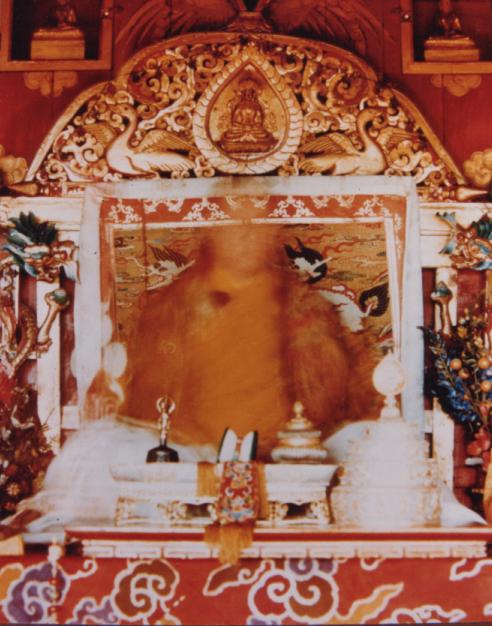
Rangjung Rigpe Dorje - See past incarnations
On the internet, this picture is claimed to be the Rainbow Body of Rangjung Dorje. However, I believe this is more likely a long exposure blur (similar to stroboscopic photography) than the beginning stages of a Rainbow Body, as described by Vallalar.

Stroboscopic photography

Motion blur
Below is an image of Lama Achuk that I believe is genuine and represents the beginning stages of the Rainbow Body, exactly as Vallalar described.

Lama Achuk - Beginning stage of the Rainbow Body
The following 8 pictures are of individuals who were approaching the Rainbow Body of Light state. While they did not complete the process as Vallalar did, they entered Jeeva or Maha Samadhi.

Vishuddhananda

Adi Shankara
Adi Shankara, also known as Shankaracharya, was an influential Indian philosopher and theologian who lived in the 8th century CE. He revitalized and systematized Advaita Vedanta, a non-dualistic interpretation of Hindu scriptures. Shankara emphasized the oneness of the individual soul (Atman) with the ultimate reality (Brahman) and founded monastic centers across India. His teachings continue to influence Hindu philosophy and spirituality.

Lahiri Mahasaya
Lahiri Mahasaya, born as Shyama Charan Lahiri, was a 19th-century Indian yogi and spiritual teacher. He is widely known for popularizing and teaching the Kriya Yoga technique. Lahiri Mahasaya was a disciple of Mahavatar Babaji, an enigmatic figure associated with the tradition of Kriya Yoga.
Lahiri Mahasaya's teachings emphasized the practice of Kriya Yoga as a means to attain spiritual realization and self-realization. Kriya Yoga is a systematic and scientific method of breath control and meditation that aims to awaken and purify the subtle energies within the body and facilitate spiritual growth.
Lahiri Mahasaya's teachings and spiritual influence spread through his disciples, particularly through the efforts of his most famous disciple, Paramahansa Yogananda, who brought Kriya Yoga to the West. Lahiri Mahasaya is regarded as a respected spiritual master and his teachings continue to inspire and guide practitioners of Kriya Yoga around the world.
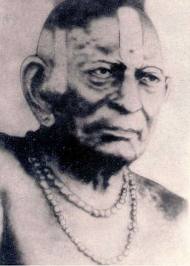
Shri Samarth

Mayamma Devi
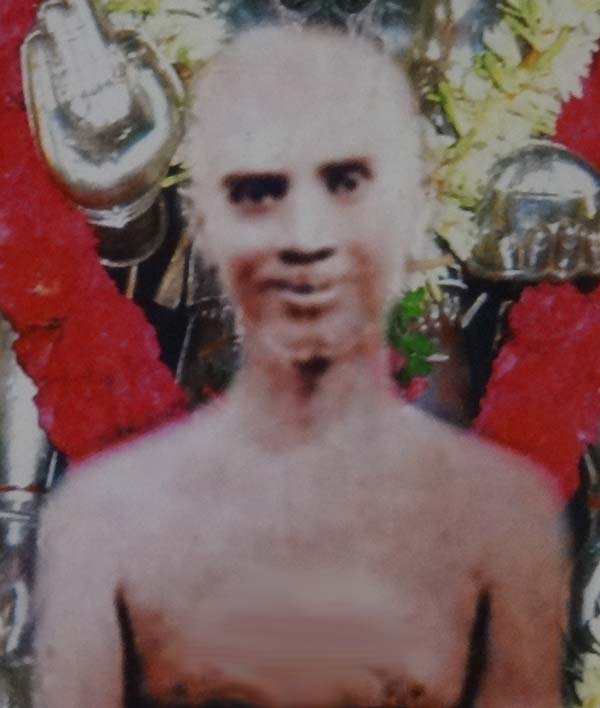
Parameshti Guru H.H. Sadasiva Bhremendra Saraswathi [Sri Sri Judge Swamigal] of Pudukkottai

Jeganathar

Devaraha Baba
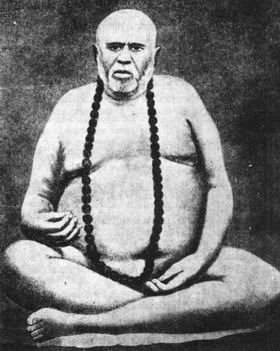
Trailanga

Sadaisiva

Sadasiva

Sri Arunagirinathar Swamigal
15th century in Tamil Nadu
Legend of the Parrot:
When Sambandandan lost a competition with the Saint, he took revenge by telling the blind King: 'If your highness can persuade Arunagirinathar to bring a parijata flower from svargaloka [one of the heavenly worlds], a few drops squeezed from the flower onto your eyes will restore your eyesight.' The King, eager to regain his vision, commissioned Arunagirinathar to do the job.
In order to reach the heavenly world, Arunagirinathar entered the body of a parrot that had recently died and reanimated it. He left his own body in one of the niches of a Gopura at Arunachaleswarar Temple and flew off to find and collect the flower. After the parrot had departed on its mission, Sambandandan, who had been watching Arunagirinathar's movements, showed the lifeless body of the poet to Pravuda Devaraya, announced that it was dead, and asked for permission to cremate it.
Some time later Arunagirinathar returned with the flower only to discover that he no longer had a human body to return to. He went to the King in his parrot body, restored the King’s eyesight with the parijata flower juice, and explained what had happened. Realising that he had been tricked, the King was struck with grief because he knew that it would now be impossible for Arunagirinathar to again resume human form. Arunagirinathar, untroubled by this bizarre turn of events, happily spent the remainder of his life in the parrot's body and even continued to compose poetry in praise of Lord Muruga. It is said that he composed and sang his famous work Kandar Anubhuti and several other poems while he was still occupying the parrot's body.

Padakacheri Ramalinga
Just like the 4 examples above, the 18 siddhars of Tamil Nadu and the 84 tantric mahasiddhars of the Himalaya underwent a similar process towards the rainbow body, but most of them have not completed the process.
So it is written that Sivavakkiyar disappeared into thin air with his body. It is also written that Siddhar Agasthiar, Bhogar, and Kalanginathar had their bodies become completely indestructible by means of kayakalpa.
18 Siddhars
84 Maha Siddhars
All the pictures below are from individuals who have dissolved their bodies into the ‘Light Body’ and disappeared completely into space.

Andal Nachair

Chetsun Nyingtig

Manickavasagar
Hand-drawn by Chidambara Swamigal. The only one of the 64 Nayanmars who reached the rainbow body state.

Jigmed Gyalwai Nyugu

Kunkyen Longchen Rabjampa (1308–1364)
Known as the "all-knowing," he was one of the most famous realized scholars in the Nyingma school of Tibetan Buddhism.
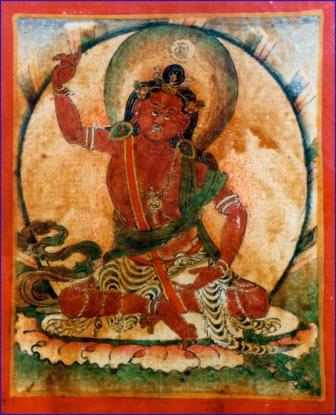
Shri Singha
He was the teacher of Padmasambhava, Jnanasutra, Vimalamitra, and Vairocana.

Jnanasutra

Vairotsana
He was the greatest of all Tibetan lotsawas. Together with Padmasambhava and Vimalamitra, he was one of the three main masters to bring the Dzogchen teachings to Tibet.

Guru Rinpoche (Padmasambhava)
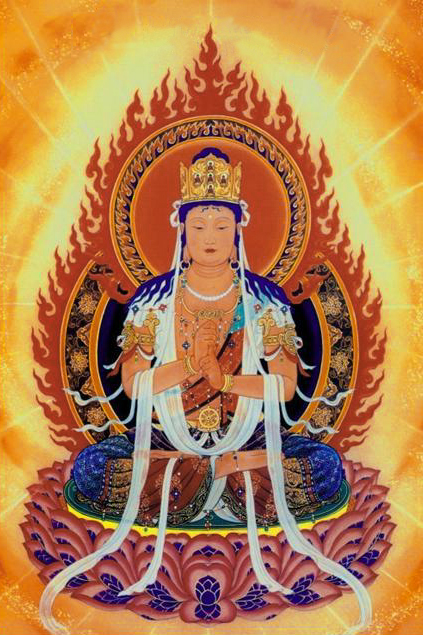
Vairocana
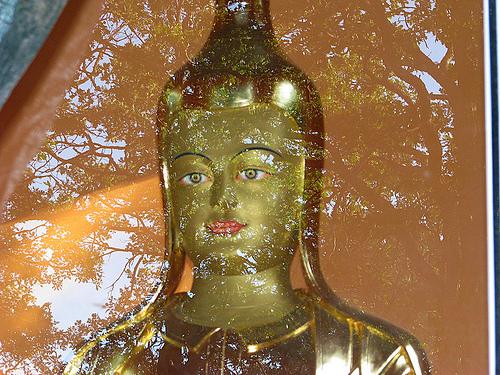
Vimalamitra
He was an 8th-century Indian monk and student of the great Indian Guru Padmasambhava.
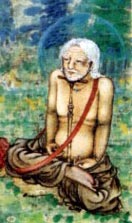
Pang Mipham Gonpo, student of Vimalamitra

Mahavir
The 24th Tirthankara of Jainism
Jainism, one of the ancient Indian religions, believes in the existence of 24 Tirthankaras who have achieved spiritual enlightenment and guide humanity on the path of liberation. These Tirthankaras are revered as enlightened beings who have crossed the ocean of samsara (cycle of birth and death). Each Tirthankara represents an ideal of perfection and is a role model for Jain followers.
The Tirthankaras are believed to have attained Kevala Jnana, a state of supreme knowledge and liberation, by practicing rigorous asceticism and self-discipline. They preached the principles of non-violence, truthfulness, non-stealing, chastity, and non-attachment, which form the foundation of Jain philosophy.
While the first Tirthankara, Lord Rishabhanatha, is considered the founding figure of Jainism, Lord Mahavira is regarded as the 24th and final Tirthankara. Lord Mahavira's teachings and spiritual journey greatly influenced the development and spread of Jainism.
Each Tirthankara is associated with a specific emblem or symbol, such as a bull, a lion, or a swastika, which distinguishes them. They are revered as divine beings who provide guidance and inspiration to Jain practitioners in their pursuit of liberation and the practice of ethical living.
The Tirthankaras occupy a significant place in Jain art, literature, and mythology, and their life stories serve as moral lessons and sources of inspiration for followers. Jain temples and pilgrimage sites often depict images or statues of the Tirthankaras, where devotees pay homage and seek blessings.
While the historical existence of the Tirthankaras may not be verifiable, their spiritual significance and teachings have had a profound impact on Jain philosophy and continue to inspire Jain followers to cultivate compassion, non-violence, and spiritual awakening.
Below are the other 23 Tirthankaras of Jainism
All attained the rainbow body of light state:

Rishabha

Ajitnath
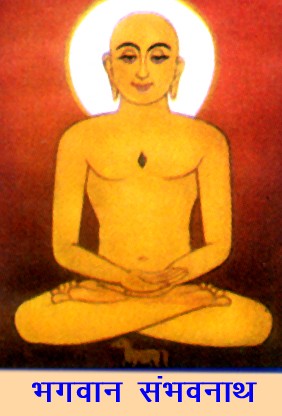
Sambhavanath

Abhinandannath

Sumatinath

Padmaprabha

Suparshvanath

Chandraprabha

Suvidhinatha

Sheetalnath
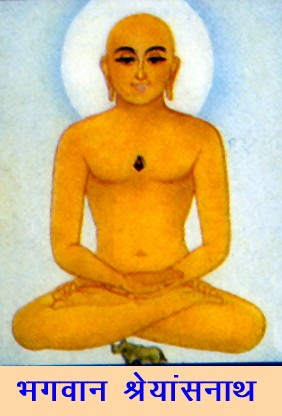
Shreyansanath
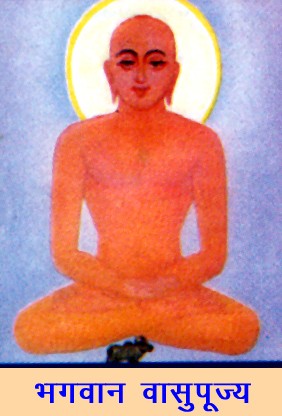
Vasupujya

Vimalnath

Anantnath

Dharmanath

Shantinath
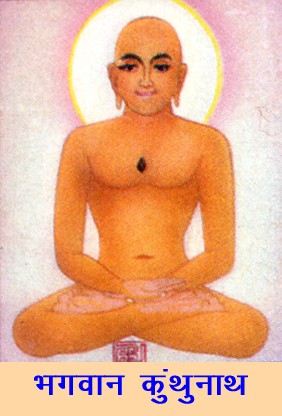
Kunthunath
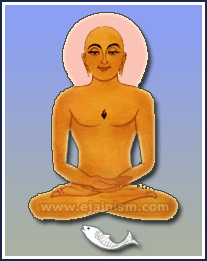
Aranath

Mallinath

Munisuvrata

Naminatha

Neminatha

Parshvanath

Tapihritsa (7th ~ 8th century)
Tapihritsa is known for his exceptional spiritual realization and his profound understanding of Dzogchen teachings. He was born in the 8th century CE in the region of Kham, which is in present-day eastern Tibet. He received teachings from various accomplished masters, including his own father, Lhase Lotsawa, who was a prominent translator of Buddhist scriptures.
Tapihritsa dedicated his life to intense meditation practices, particularly in the Dzogchen tradition. Tapihritsa's own realization and mastery of these teachings made him a highly revered figure among both his contemporaries and subsequent generations.
His spiritual accomplishments are often associated with his encounters with various visionary experiences and the guidance of enlightened beings. It is said that Tapihritsa received direct transmissions and teachings from Guru Padmasambhava, the founder of the Nyingma tradition, and other enlightened masters.
Tapihritsa's teachings and writings on Dzogchen have been preserved and are considered profound and authoritative within the Nyingma lineage. His emphasis on direct realization and the recognition of the primordial nature of mind continues to inspire and guide practitioners of Dzogchen to this day.
While Tapihritsa's historical existence is not extensively documented, his spiritual legacy and teachings have had a significant impact on the development and transmission of Dzogchen teachings within Tibetan Buddhism. He is revered as a great master and an embodiment of the enlightened qualities that Dzogchen aims to cultivate.

Nirmanakaya Garab Dorje (Prahevajra)
He was the first human lineage-holder of the Dzogchen teachings. When he died at the source of the Danatika River, his body dissolved into immaculate space amid masses of rainbow light. His main disciple, Manjushrimitra, was overcome and cried out to his master. Suddenly, Prahevajra (Garab Dorje) appeared in the sky within a mass of light and with the sound of a thunderclap, a tiny golden casket descended into the palm of Manjushrimitra’s hand. Within it he found the last testament of Prahevajra, Tsiksum Nedek (The Three Lines That Penetrate the Essence), written in blue malachite on a leaf.

Manjushrimitra
He became the main student of Garab Dorje and a teacher of Dzogchen.

Jampal Shenyen Vajrapani
Student of Garab Dorje

Mandarava

Khandro Yeshi Tshogyal
C) Enlightenment: Rainbow body of great transference / ja lü phowa chenpo
This state is similar to the rainbow body of light state; however, the process of shrinking goes much faster and in most cases almost instantaneous. The light body remains visible for those who are in need of their help. Now keep in mind that the light body that remains is not a person or individual as we know it. It is divine itself in the form of light. It has no will nor desire and only remains for those who are attuned to it.
Also, there seems to be a very thin dividing line between the rainbow body of light and that of great transference. It might even be that they are one and the same, this is almost impossible to verify.
Vallalar (Ramalinga)
Click on this link for a complete webpage dedicated to Vallalar.
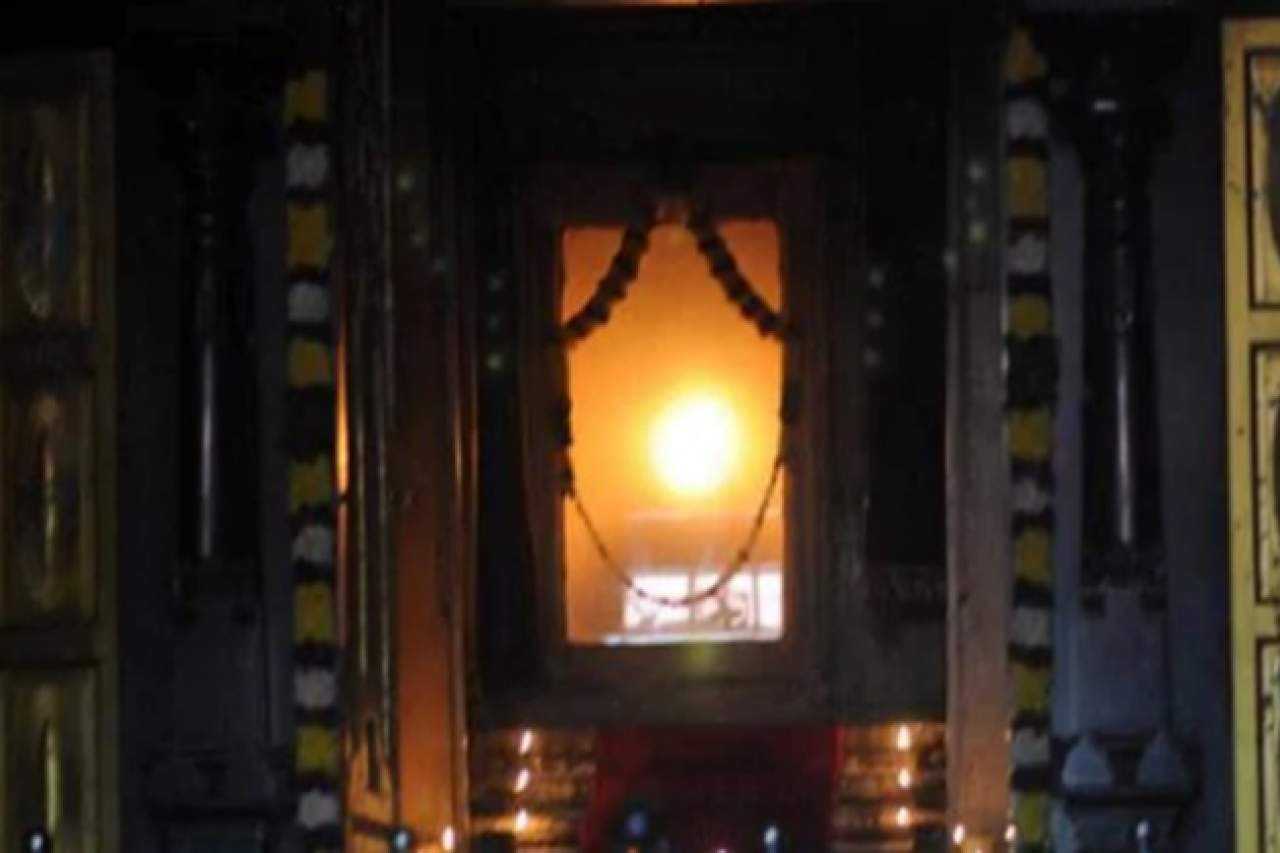
Jyothi Darshan (from the Gnana Sabai temple)
Mahavatar Babaji
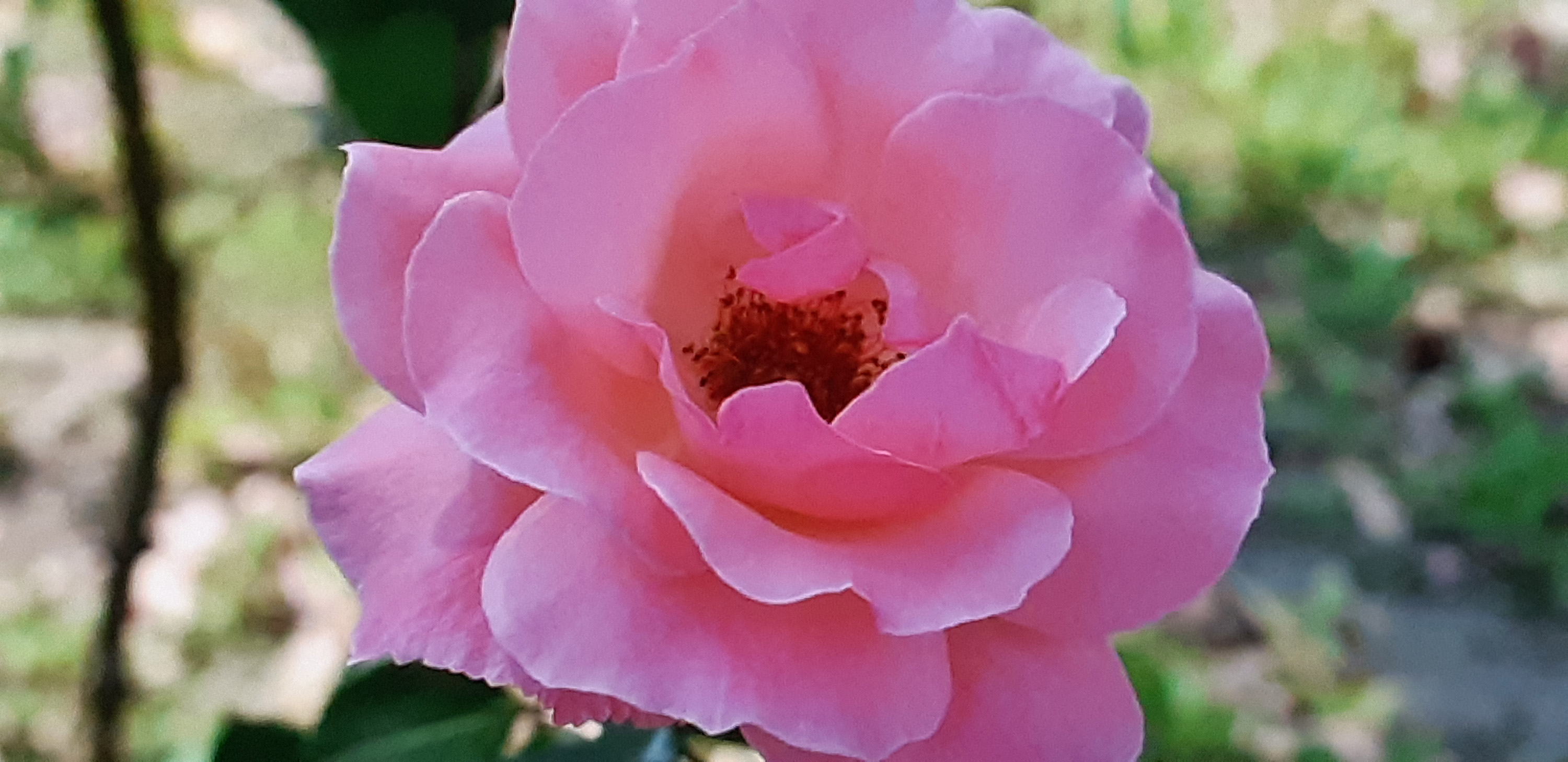
It is said that this flower grew near the place where Babaji meditated. Indeed it emanates a strong energy.
The 8 Taoist Immortals

The Eight Taoist Immortals are revered (most likely mythical) figures in Taoist folklore and mythology. According to their legendary stories, each of the immortals achieved immortality through different means, often involving spiritual practices, mystical encounters, and the attainment of Taoist wisdom. Here are brief summaries of how some of the Eight Immortals are said to have reached immortality:
-
Zhang Guolao: Attained immortality through the study of Taoist alchemy and the elixir of life.
-
Lu Dongbin: Achieved immortality by refining his essence through spiritual cultivation and receiving guidance from a higher spiritual being.
-
Zhongli Quan: Gained immortality through Taoist alchemy and attaining harmony with the Tao.
-
Han Xiangzi: Achieved immortality through the cultivation of spiritual practices, music, and mastery of Taoist principles.
-
Li Tieguai: A skilled physician who attained immortality after his soul traveled to the heavens while his body was preserved in a magical gourd.
-
He Xiangu: Achieved immortality through meditation, self-purification, and devotion to the Tao.
-
Lan Caihe: Reached immortality through unconventional and spontaneous means.
-
Cao Guojiu: A high-ranking official who became a Taoist immortal through virtuous conduct and dedication to Taoist practices.

Nyang Tingdzin Zangpo
Student of Vimalamitra

Chetsun Senge Wangchuk
At the age of 125, he attained the rainbow body, vanishing into the sky in a cloud of rainbow light.
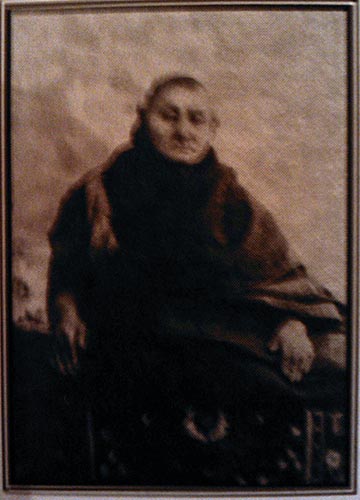
Dzogchen master Khenchen Tsewang Rigdzin
Nyoshul Khenpo writes in *A Marvelous Garland of Rare Gems*: During the conflict [which brought great tragedy to Tibet], people of evil intent seized Tsewang Rigdzin and sentenced him to prison. As they escorted him there, he began chanting the Vajra Guru mantra. In a manner reminiscent of the learned Indian Buddhist master Shantideva, Tsewang Rigdzin rose higher and higher into the air in plain view of everyone, finally dissolving into a mass of light, an event still remembered throughout eastern Tibet.
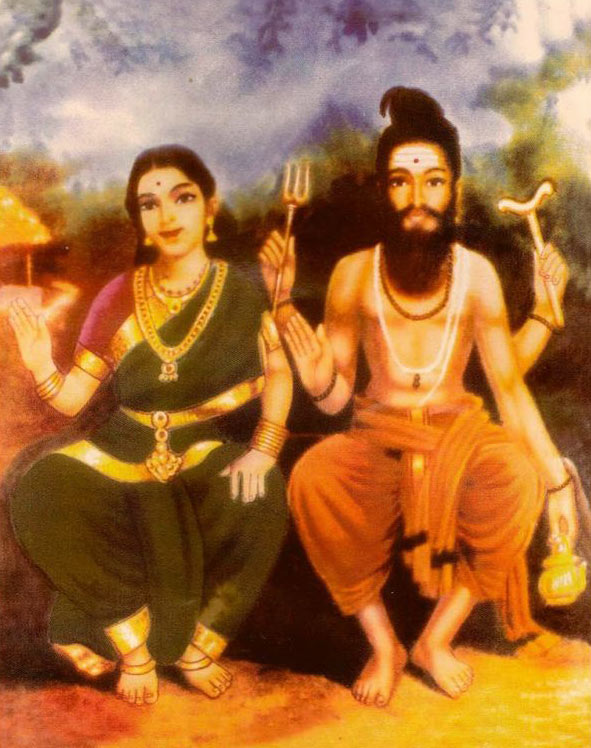
Kagabujandar (Sri Kaagapujandar)
Sri Kaagapujandar is the master in the art of immortality. According to legend, he lived around the 7th century CE. There are stories that place him next to Babaji as a light being; however, there is also a Jeeva Samadhi indicating he still had a body. Further research is needed. A Jeeva Samadhi of Sri Kaagapujandar is present in the Sornapureeshwar Temple in Thenponparapi village situated near Chinna Salem, Villupuram District.

Shukadeva
Shuka Deva was a born hermit. Son of Rishi Veda Vyasa, he discarded the comforts of home at a very early age. When Veda Vyasa tried to talk him out of living the life of a sanyasi, Shuka Deva silenced his old father, saying that the longer he stayed at home, the more tightly he would be caught in the web of maya. In time, Shuka Deva acquired the knowledge of all that was worth knowing, and his fame spread far and wide.
Here is a quote from Shukadeva and his father: As the story went, Shukadeva got married and had two children. He educated his children, gave his daughter and son in marriage, and set them up in their households with their livelihoods. When they were firmly established, he said, “Ok.” He ascended to heaven. Veda Vyasa called out, “Shukadeva, come back down here, wait a minute! I wanted a son so that posterity would be here to perform my funeral rites so that I could go to heaven. And here you’ve achieved liberation and you are ascending to heaven, leaving me here.” Shukadeva replied to his father Veda Vyasa, “Father, don’t look at me through the eyes of attachment; look at me through the eyes of wisdom. Know that I have fulfilled my dharma, my highest purpose on this earth, and now I am free to ascend. You still have karma left to perform; you remain and perform it.”
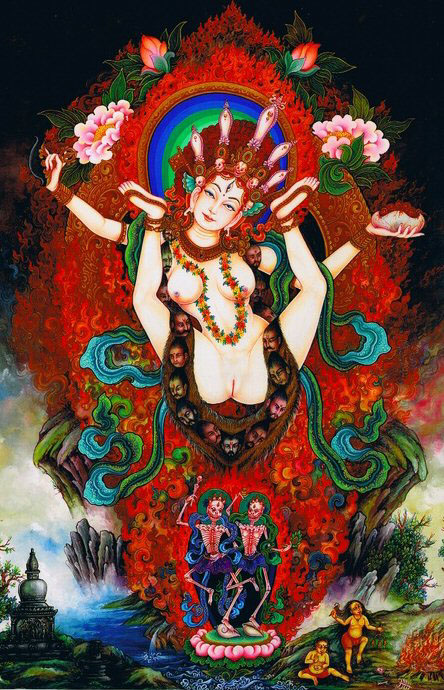
Sukhasiddhi
Sukhasiddhi is the last real human being in this list as far as it can be verified.
The life story of Sukhasiddhi is very wonderful. In the 11th century, when she was about sixty or sixty-five years old, she experienced a great deal of suffering. Due to that, she engaged in the practice of Vajrayana and attained a state where she appeared like a sixteen-year-old girl.
Her story is that she and her family were very poor, and they reached the point where they only had one container of rice left. Her husband and son went out searching and begging for food but were unable to find any. While they were gone, Sukhasiddhi, out of great compassion, gave the last container of rice to a beggar.
When her husband and son returned, expecting to eat the last of the rice, they discovered it was gone. Angered and upset by her act of compassion, they threw her out of the house. Upset and crying, Sukhasiddhi left her town and gave rise to a very strong renunciation of samsara.
With great fortune, she encountered a siddha who gave her oral instructions. Through meditation, she realized mahamudra, the supreme siddhi. Her mind was liberated into luminosity, and her body became an empty form like a rainbow, appearing as a sixteen-year-old girl. She unified luminosity and the illusory body.
It is said that even now she resides in India and can be found in various places.
-From Mahamudra Shamatha and Vipashyana, Rocky Mountain Shambhala Center, 1991, p. 195. Translated by Elizabeth Callahan.

Simandhar Swami
Simandhar Swami is a living Tirthankar, an Arihant, who is said to be currently present on another world in the Jain mythological universe. Simandhar Swami is believed to be 150,000 Earth years old and resides in the city of Pundarikgiri, the capital of Pushpakalavati, one of 32 geographical divisions on Mahavideh Kshetra.
Is this a story like the eight great bodhisattvas, the Five Tathagatas (the Amitābhas), or the many different gods and goddesses in various religions? Or is there more physical evidence to this? You be the judge...
So it is important to note that the existence of Simandhar Swami as a historical figure is a matter of faith and religious belief within Jainism. There is no historical or empirical evidence available to verify the existence of Simandhar Swami as a person who lived in a specific time and place.
The concept of Simandhar Swami is primarily associated with the Shrimad Rajchandra tradition within Jainism. Shrimad Rajchandra, also known as Rajchandraji, was a prominent figure in the late 19th and early 20th centuries who played a significant role in the spiritual and philosophical development of Mahatma Gandhi. Followers of the Shrimad Rajchandra tradition consider Simandhar Swami as the ultimate spiritual goal and a source of divine guidance.
It is important to understand that the belief in Simandhar Swami's existence and significance varies among different Jain sects and individuals. For some Jains, Simandhar Swami is considered a living Tirthankara, while for others, the concept may hold symbolic or allegorical meaning. As with many religious figures, the understanding and reverence for Simandhar Swami are rooted in faith and spiritual devotion.

Samantabhadra & Samantabhadri
(One of the 8 bodhisattvas)
Our true nature, always good, always well... This is who we truly are.
Samantabhadra, also known as Samantabhadra Bodhisattva, is a significant figure in Mahayana Buddhism. In Buddhist tradition, Samantabhadra is considered a celestial bodhisattva who represents the practice of great compassion and wisdom. However, it is important to note that within Buddhism, celestial bodhisattvas are often regarded as symbolic or archetypal figures rather than historical individuals.
The concept of Samantabhadra Bodhisattva originated from various Buddhist scriptures and sutras, such as the Avatamsaka Sutra (also known as the Flower Garland Sutra). These texts describe Samantabhadra as a bodhisattva who embodies virtues such as generosity, virtue, patience, diligence, concentration, and wisdom. Samantabhadra is often depicted alongside the bodhisattva Manjushri, symbolizing wisdom, and the Buddha Amitabha, representing compassion.
While there are no historical records or concrete evidence to suggest that Samantabhadra lived as an actual person, this does not diminish the importance and significance of Samantabhadra as a revered figure within the Buddhist tradition. In Buddhism, there is a rich tradition of utilizing allegorical and mythical figures to convey spiritual teachings and ideals, and Samantabhadra is one such example.
Amitabha
Amitabha is a celestial Buddha who presides over the Pure Land, a blissful realm beyond the ordinary world. He is revered for his boundless compassion and his aspiration to help all sentient beings attain enlightenment. Amitabha is often depicted in a meditative posture, holding a begging bowl, and radiating a warm and serene light.
According to Pure Land teachings, Amitabha created the Pure Land as a realm of pure and perfect conditions, where practitioners can be reborn after death. By chanting his name or reciting his mantra with faith and devotion, devotees aspire to be reborn in Amitabha's Pure Land, where they can pursue the path to enlightenment in a supportive and favorable environment.
Amitabha is believed to embody the qualities of wisdom, compassion, and liberating power. Through his compassionate vows and spiritual merit, he offers a refuge and a path to liberation for all beings, especially those who sincerely call upon his name and seek his guidance.
In summary, Amitabha is a compassionate Buddha who provides a path to liberation and a Pure Land for practitioners who aspire to be reborn there. His teachings emphasize faith, devotion, and the power of his compassionate vows to guide sentient beings towards enlightenment.
